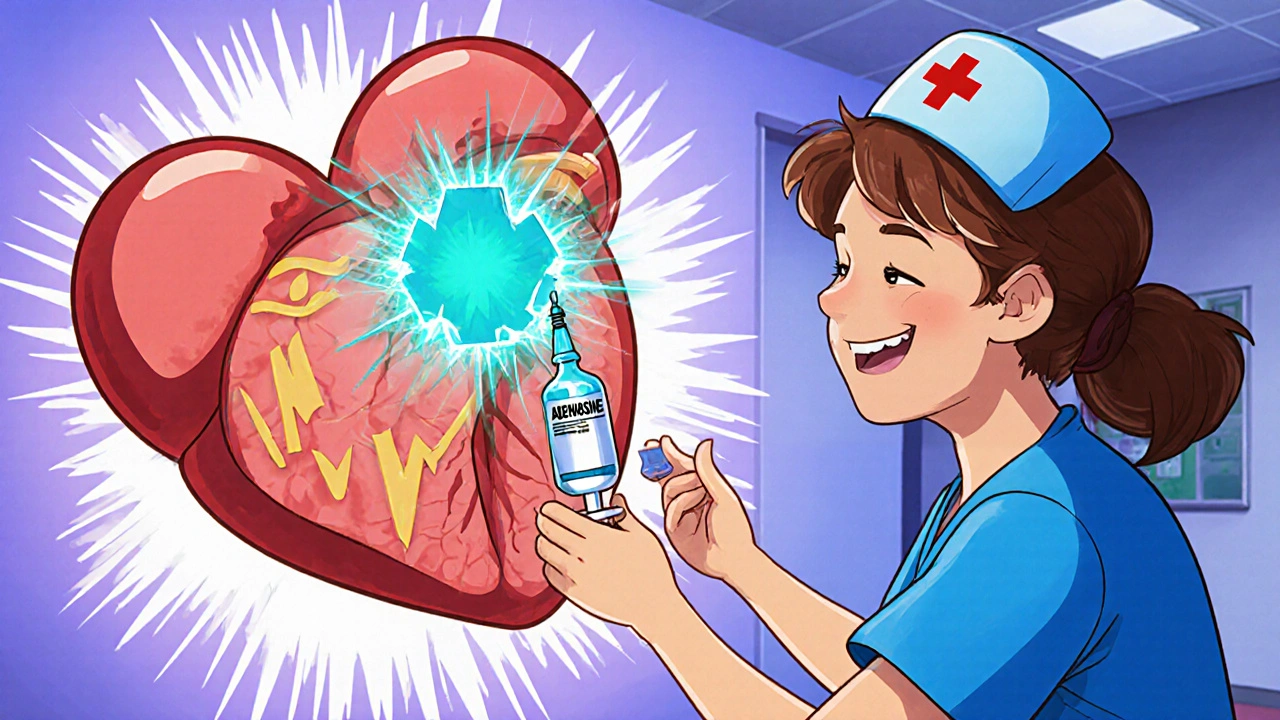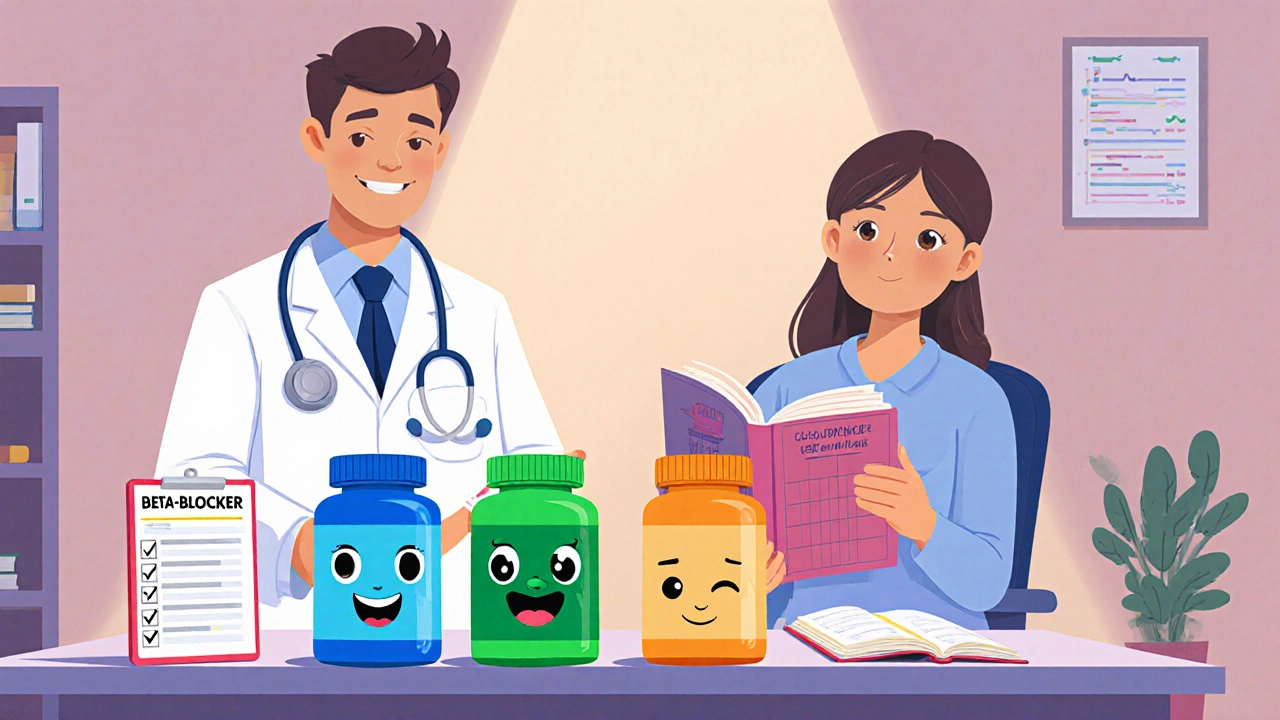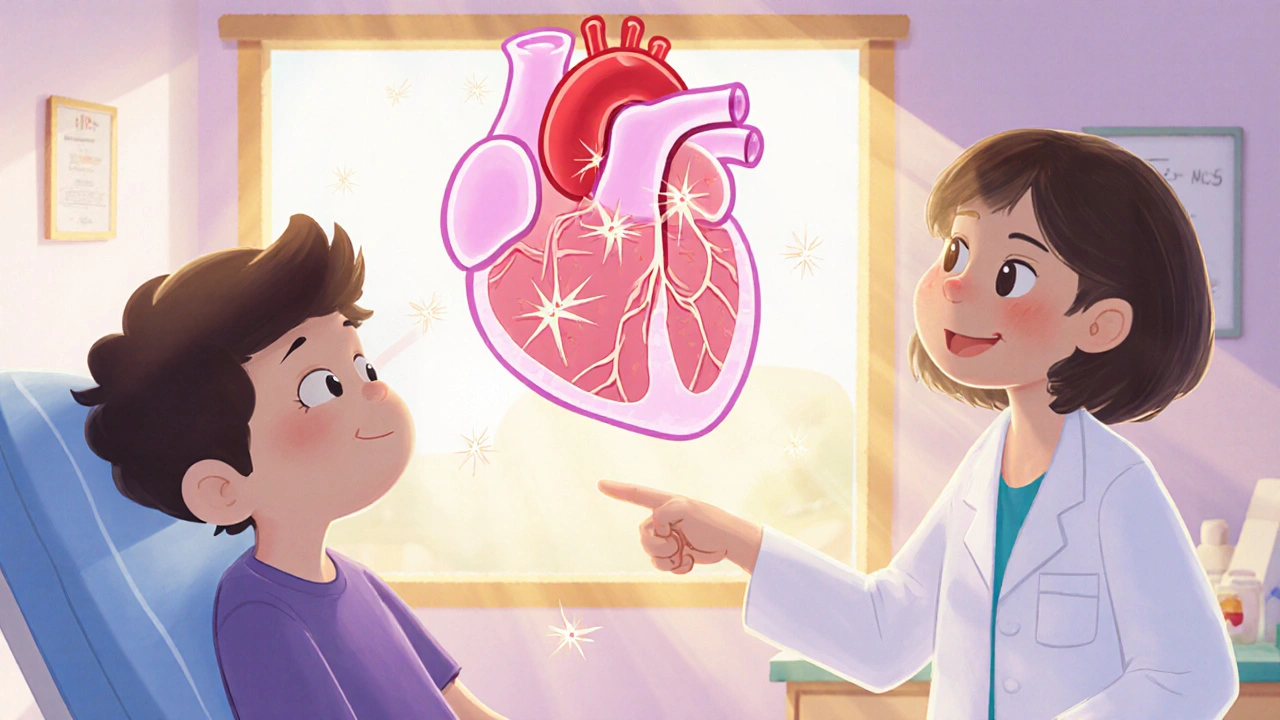Supraventricular tachycardia (SVT) is a rapid heart rhythm that starts above the ventricles, often causing palpitations, dizziness, or shortness of breath. When lifestyle tweaks aren’t enough, doctors turn to supraventricular tachycardia medication to break the circuit and keep the heart steady. Below you’ll find the drug classes most commonly used, how they work, when they’re recommended, and what side‑effects to watch for.
Why Medication Matters in SVT Management
SVT can appear suddenly and last from a few seconds to several hours. While maneuvers like the Valsalva technique or carotid massage help many patients, certain episodes demand a pharmacologic ‘reset’. Medication offers three key benefits:
- Rapid termination - drugs such as adenosine can stop an episode within seconds.
- Pre‑emptive control - beta‑blockers or calcium‑channel blockers lower the likelihood of future attacks.
- Bridge to definitive therapy - when an ablation procedure is planned, meds keep the rhythm in check.
First‑Line Acute‑Termination Drugs
The go‑to agents for an ongoing SVT episode are those that act quickly on the heart’s electrical pathways.
Adenosine is a nucleoside that temporarily blocks the AV node, halting re‑entrant circuits. It’s administered as a rapid IV push (6 mg followed by 12 mg if needed) and works in less than 10 seconds. The main drawback? A brief feeling of chest pressure or flushing, which resolves as the drug clears.
For patients with asthma or severe COPD, adenosine may provoke bronchospasm, so clinicians opt for an alternative.
Drugs for Ongoing Rhythm Control
When SVT recurs or a patient can’t tolerate acute‑termination meds, long‑acting agents become the backbone of therapy.
| Class | Typical Example | Onset | Common Dose (Adult) | Key Side‑Effects |
|---|---|---|---|---|
| Beta‑Blockers | Metoprolol | 30-60 min | 50 mg PO daily | Fatigue, bradycardia, bronchospasm |
| Calcium‑Channel Blockers | Verapamil | 15-30 min | 80 mg PO daily | Constipation, hypotension, AV block |
| Class IC Antiarrhythmics | Flecainide | 1-2 hours | 100 mg PO BID | Pro‑arrhythmia in structural heart disease, dizziness |
| Digoxin (rarely used) | Digoxin | 2-4 hours | 0.125 mg PO daily | Nausea, visual halos, toxicity at high levels |
Beta‑blockers like metoprolol slow the heart rate by blocking sympathetic stimulation. They’re especially helpful for patients who also have hypertension or anxiety‑related palpitations. However, they should be started low and titrated slowly to avoid excessive slowing.
Calcium‑channel blockers (non‑dihydropyridine type) such as verapamil impede calcium influx in the AV node, reducing conduction speed. These agents work well for SVT originating from atrioventricular nodal re‑entry (AVNRT). Caution is needed in patients with heart failure because they can depress cardiac output.
Class IC antiarrhythmics (flecainide, propafenone) directly block sodium channels, shortening the refractory period of cardiac tissue. They are effective for patients without structural heart disease, but must be avoided in coronary artery disease due to pro‑arrhythmic risk.
Digoxin is now a niche choice, mainly reserved for patients who already need rate control for atrial fibrillation and have concurrent SVT.

Choosing the Right Medication: Decision Factors
Picking a drug isn’t a one‑size‑fits‑all process. Doctors weigh several variables:
- Underlying heart structure - scar tissue or left‑ventricular dysfunction steers clinicians away from Class IC agents.
- Comorbid conditions - asthma pushes you toward calcium‑channel blockers; hypertension favors beta‑blockers.
- Frequency of episodes - infrequent SVT may be managed with adenosine alone, while daily attacks merit a maintenance drug.
- Patient preference - oral pills are easier than regular IV visits.
- Potential drug interactions - many SVT meds interact with anticoagulants, statins, or anti‑seizure drugs.
Monitoring and Follow‑Up
After the first prescription, the next 4‑6 weeks are critical. Physicians usually schedule a follow‑up to:
- Check heart rate and rhythm on a 12‑lead ECG.
- Review side‑effects and adjust dose.
- Order blood work if using digoxin (check serum level) or flecainide (liver function).
Patients are encouraged to keep a symptom diary-date, time, trigger, and any medication taken. This log helps the clinician see patterns and decide whether to continue, switch, or consider an electrophysiology study.

When Medication Isn’t Enough
Even with the best drug regimen, some people continue having episodes. In those cases, referral for an electrophysiology study with possible catheter ablation becomes the next step. Ablation targets the precise pathway causing SVT and offers a cure rate above 95 % for typical AVNRT.
That said, many patients prefer to stay on medication rather than undergo an invasive procedure, especially if episodes are well‑controlled and side‑effects are mild.
Common Pitfalls and How to Avoid Them
- Over‑reliance on adenosine - using it repeatedly can cause airway irritation; switch to a maintenance drug if episodes recur.
- Ignoring contraindications - giving beta‑blockers to a severe asthmatic can precipitate bronchospasm.
- Missing drug interactions - flecainide combined with certain antidepressants raises pro‑arrhythmic risk.
- Skipping follow‑up labs - digoxin toxicity can develop silently; regular serum level checks are a must.
Quick Checklist for Patients
- Know the name, dose, and timing of every SVT medication you take.
- Carry a written list in case you need emergency care.
- Report any new dizziness, unusual palpitations, or shortness of breath immediately.
- Keep a log of episodes and triggers.
- Ask your doctor about lifestyle changes that can reduce episode frequency (caffeine, alcohol, stress).
When should I use adenosine versus an oral medication?
Adenosine is ideal for a sudden, ongoing SVT episode because it works within seconds. If episodes happen repeatedly or you need long‑term control, oral agents such as beta‑blockers or calcium‑channel blockers are preferred.
Can I take more than one SVT medication at the same time?
Combination therapy is sometimes used, especially when a patient cannot tolerate a high dose of a single drug. However, doctors must monitor for additive side‑effects like excessive bradycardia or hypotension.
What are the red‑flag symptoms that require emergency care?
Seek immediate help if you feel chest pain, faint, shortness of breath that worsens, or a heart rate that stays above 200 bpm for more than a few minutes despite medication.
Is catheter ablation better than medication?
Ablation offers a potential cure with >95 % success for typical SVT, while medication manages symptoms. The choice depends on episode frequency, side‑effect tolerance, and personal preference.
How often should I have follow‑up appointments?
Initial follow‑up is usually 4-6 weeks after starting a new drug, then every 3-6 months if you’re stable.
